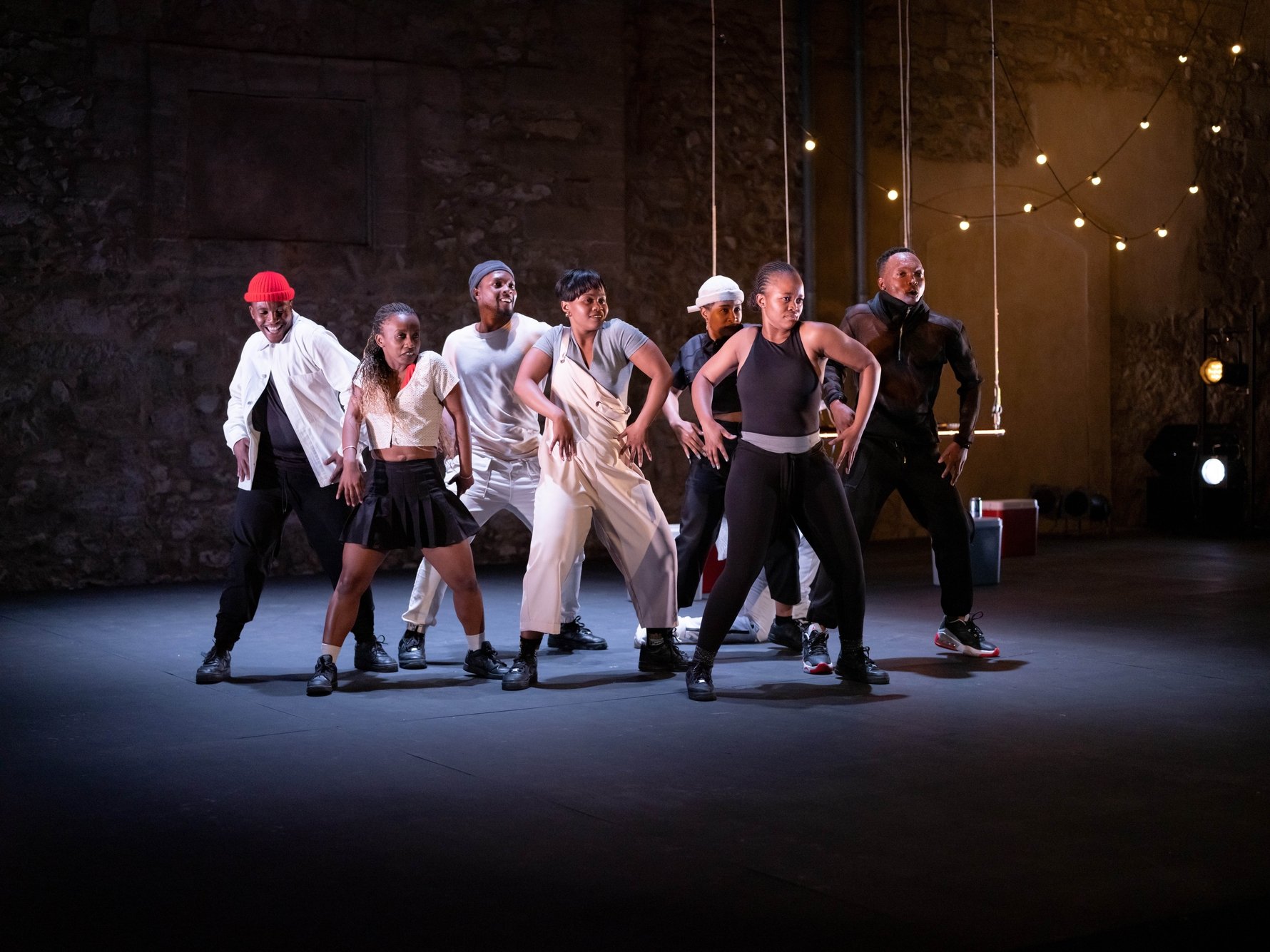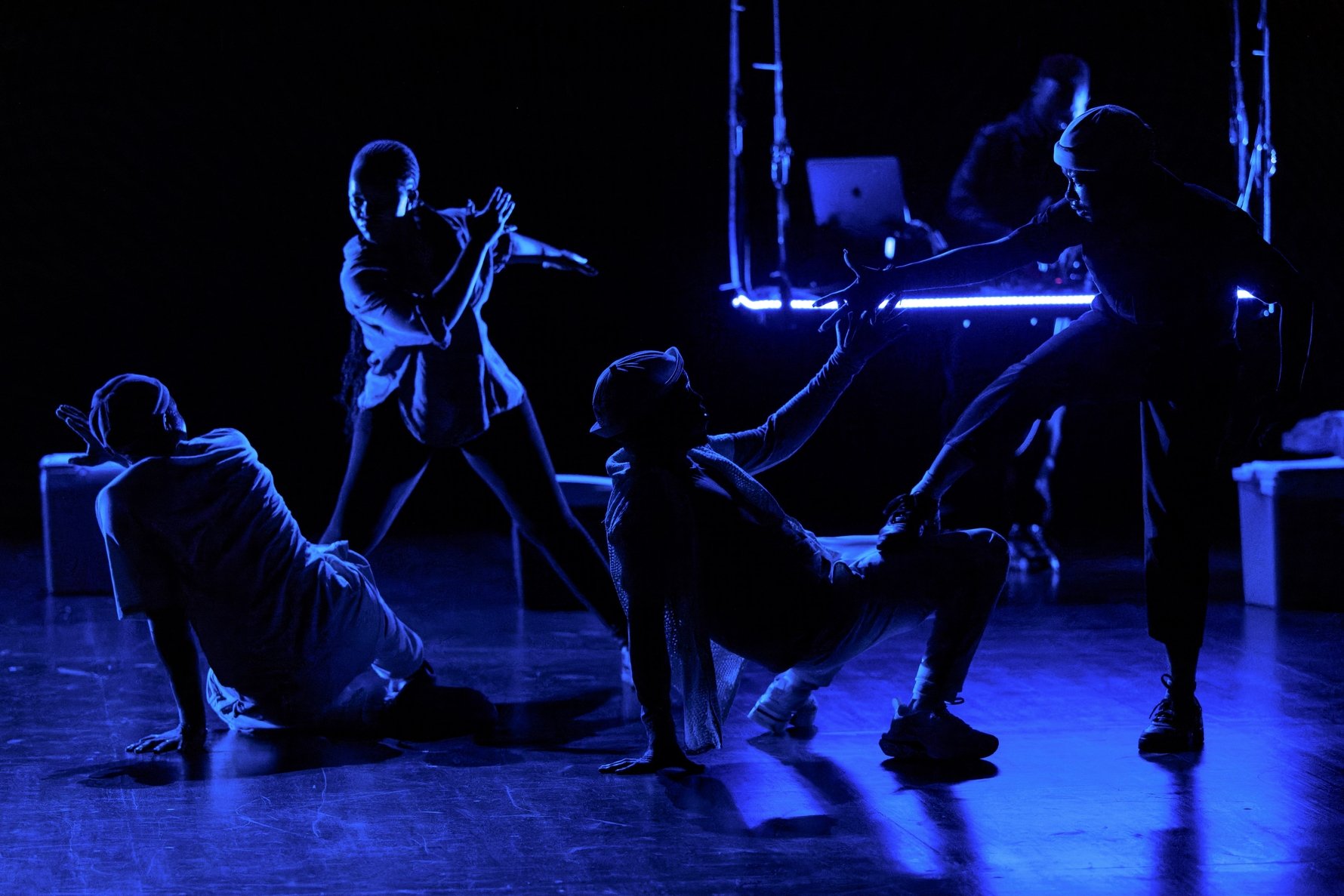Roughly an hour long, the show is captivating, bold and striking all at once. It drives the viewer into the vibrancy of township life where community, tradition and culture matters, and hustling is a means to an end. What’s rather intriguing about Via Injabulo is the blend between history and modernity relayed by infusing pantsula, gumboot, hip hop, traditional and African dance. It’s difficult to resist the urge to join the young dancers on stage whose bodies teleport you to the colourful streets of this township that lies east of Johannesburg.

Buru Mohlabane, the artistic director of the company, shares that the establishment of Via Katlehong in 1992 was inspired by the need to get the community’s young people off the streets with “the love of dance also helping in making sure the group stays afloat and sustainable”.
“I’m a second-generation hip hop dancer. So growing up within that community as a black man in France I just remember believing in peace, unity and fun. It fuelled my love for dancing, and I realised while visiting South Africa that I’d lost the authenticity of my own way of living and the meaning of what I do through dance." – Choreorgrapher Amala Dianor.
“We saw that a lot of us started to be involved in alcohol abuse and drugs, so we came together to formulate this group with the intention of being a support system to one another and keeping occupied,” he shares.
Alongside fellow co-founders Vusi Mdoyi and Steven Faleni, Mohlabane also mentions that the organisation created a safe environment that encourages creativity and self-expression.
“Our routine consisted of going to school and then coming back to dance. Even on Saturdays we would do chores and meet again to dance; there was no free time,” the 39-year-old says.
Having travelled in Europe and recently staging Via Injabulo in Gaborone, Mohlabane relays that its significance is in its ability to merge amapiano and pantsula while honouring South Africa’s diverse cultures.
“Exploration and understanding of our history helped us to represent our townships the best way possible. Some of the inspirations are drawn from our everyday life situations, seeing our fathers and grandfathers dance and we would mimic them, and create something from that. So the key was to be inspired by our own people and make sure to not drift away from our beliefs as a township,” he adds.
For Mohlabane, the use of pantsula and gumboot dance is important because of the historical origins. Both dance forms originated during the apartheid regime and were used as a form of resistance against the racially discriminatory system.

“We are the only company in South Africa that has stayed true to the essence of these dance forms as they hold a very significant part of our history as black people. And what we hope for in our company is to educate people about that history,” the creative director emphasises.
More than 20 years after the company's inception, it has continued in its mission to get the youth involved in dance while partnering with internationally acclaimed choreographers Amala Dianor and Marco da Silva Ferreira in Via Injabulo to promote collaboration and skills development.
“Our main aim is to reach and engage versatile dancers and performers. As a company made by the community for the community, we believe in collaboration. Although we’ve found our niche in pantsula, opening doors to working with different choreographers and performers has helped our company grow in a much more direct way,” Mohlabane shares.
Which is a sentiment that’s echoed by French choreographer Dianor, who describes his experience working on the performance as “very intense and beautiful”.
The European performer wanted to explore the complexities of post-apartheid South Africa by telling a story of how communities and young people are defining and re-building society.
“For Via Injabulo, I wanted to conceptualise my own experience of South Africa coming here as a European choreographer seeking to understand the post-apartheid generation and how they found their place in this newly democratic country,” he says.
Much to his surprise, exploring Katlehong, spending time with local dancers and being exposed to pantsula and amapiano ignited his fervour for dance, which he shares and captures in Via Injabulo, while injecting his expertise in contemporary and hip hop dance.
“I’m a second-generation hip hop dancer. So growing up within that community as a black man in France I just remember believing in peace, unity and fun. It fuelled my love for dancing, and I realised while visiting South Africa that I’d lost the authenticity of my own way of living and the meaning of what I do through dance. And that’s the reason I tried to demonstrate people being themselves, sharing movement and dancing on stage,” he says.
And it is the joy of togetherness, having fun and creating unique ways of existing while reshaping society that is the meaning behind Via Injabulo, as it celebrates the beauty of Katlehong and township life. The tour is made possible with support from the French Institute of South Africa, the French Institute in Paris, and TotalEnergies Marketing South Africa.
Via Injabulo is on show at Joburg Theatre from Thu, Jun 29 – Sun, Jul 2. Book your tickets here.




Comments